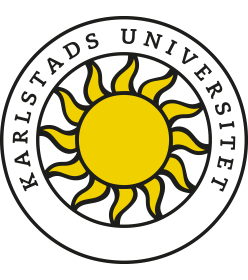Karlstad Applied Analysis Seminar (KAAS)

Subscribe to the KAAS calendar and stay updated automatically. Copy the link and add it to your online calendar.
Future seminars:
Talk-151
When: 15 Oct 2025, 10:30-11:15
What: On quasi-isometric liftings for operators on Hilbert spaces
Who: Andra-Maria Stoica, Lucian Blaga University of Sibiu, Romania.
Where: https://kau-se.zoom.us/j/61616693592
This presentation investigates quasi-isometric liftings for operators on Hilbert spaces that are similar to contractions. A bounded linear operator $T$ is said to be a quasi-isometry if it acts as an isometry on its range. The case of operators that are contractive on their range is also explored, providing a clear illustration of how the developed theory parallels the classical contraction setting. Special attention is given to liftings that are left-invertible and also liftings that resemble the classical Nagy–Foiaș isometric liftings for contractions.
The analysis highlights the role of wandering subspaces, as well as the Cauchy dual operator, in the study of left-invertible operators. These operators are significant due to their special actions and their connection with model theory, as they can be transformed into multiplication operators on model spaces such as classical function spaces including Lebesgue, Hardy, and Dirichlet spaces. As a consequence, the operators that admit such liftings can be also seen on model spaces and so they can be used in order to prove general interpolation problems for analytic functions.
Talk-152
When: 22 Oct 2025, 10:30-11:15
What: Data-Driven Optimal Trading of Renewables on Intraday Energy Markets
Who: Michael Samet, RWTH Aachen, Germany
Where: https://kau-se.zoom.us/j/61616693592
The growing penetration of weather-dependent renewable generation in European power markets increases intraday price volatility and exposes market participants to imbalance penalty risks imposed by transmission system operators, creating a need for robust quantitative trading tools. We develop a data-driven, continuous-time stochastic optimal control (SOC) framework for intraday electricity trading on continuous exchanges. Wind production and energy prices are modeled by forecast-driven Itô–Lévy stochastic differential equations, which incorporate market asymmetries in jumps. The associated Hamilton–Jacobi–Bellman (HJB) partial integro-differential equation (PIDE) is solved via a a proposed semi-implicit finite difference scheme, yielding optimal trading policies that balance expected revenues, liquidity costs, and imbalance penalties. Numerical experiments on German intraday data demonstrate the economic value of forecast-driven and jump-aware strategies, highlighting robustness to volatility and tail risks.
Talk-153
When: 29 Oct 2025, 10:30-11:15
What: Asymptotic and numerical analysis of non-Newtonian flows in networks of blood vessels
Who: Grigory Panasenko (Institute of Applied Mathematics, Vilnius University, Lithuania and Institute Camille Jordan UMR CNRS 5208, University Jean Monnet, Saint-Etienne, France)
Where: 21E202, and online: https://kau-se.zoom.us/j/61616693592
Partial differential equations in thin domains combining thin plates and thin rods or pipes (so-called multi-structures) are extensively studied in mathematical solid and fluid mechanics (see e.g. [1-3]). In particular, in [3-6] the so called thin tube structures were introduced as geometrical models for networks of thin blood vessels, tubes in catalytic converters, pipelines etc. The asymptotic analysis of the viscous Newtonian flows in these structures allowed to introduce the hybrid dimension models. They combine one-dimensional and multidimensional description of the flow with asymptotically exact coupling conditions between 3D and 1D parts of the model (see [4,5] and a recent monograph [6]). Another approach for junction of models of different dimensions for blood flow in arteries was proposed in [7, 8]. Thus, hybrid dimension models provide the one-dimensional description in the main part of the domain and make small full-dimensional zooms. These zooms give detailed description of the flow in the zones of interest such as the bifurcations of vessels, zones of blood clot formation, stents and so on. The hybrid dimension models allow substantially accelerate computations without loss of accuracy. In [3-6] the so called Newtonian rheology was considered : the Navier-Stokes equations with constant viscosity. However, it is well-known that the blood as well as melted polymers exhibit non-Newtonian rheology, when the viscosity depends on the gradient of velocity (shear rate). In particular, the numerical simulations for the blood show the difference about 10-15% between the results obtained via Newtonian and non-Newtonian models of flows. The talk will present recent results on asymptotic analysis and partial asymptotic reduction for the equations of non-Newtonian flows in thin tube structures, as well as some numerical experiments for real-life networks of vessels. These results are obtained in collaboration with K.Pileckas (see [9]). They are justified via asymptotic analysis of the full-dimensional problem in the whole domain of the flow and the proof of estimates for the difference between the exact solution of the full-dimensional problem and the solution to the hybrid dimension model.
References:
- P.G. Ciarlet, Plates and Junctions in Elastic Multi-structures. An Asymptotic Analysis, Masson, Paris, 1990.
- V. Kozlov, V. Maz'ya, A. Movchan, Asymptotic Analysis of Fields in Multi-Structures}, Oxford Mathematical Monographs., Oxford Science Publications, The Clarendon Press, Oxford University Press, New York, 1999.
- G. Panasenko, Multi-scale Modeling for Structures and Composites, Springer, Dordrecht, 2005.
- G. Panasenko, Asymptotic expansion of the solution of Navier-Stokes equation in a tube structure, C.R. Acad. Sci. Paris, 326, IIb, 1998, 867—872.
- G. Panasenko, Partial asymptotic decomposition of domain: Navier-Stokes equation in tube structure, C.R. Acad. Sci. Paris, 326, IIb, 1998, 893—898.
- G. Panasenko, K. Pileckas, Multiscale Analysis of Viscoous Flows in Thin Tube Structures, Birkhauser, Springer Nature Switzerland AG, 2024.
- L. Formaggia, A. Veneziani, Reduced and Multiscale Models for the Human Cardiovascular System. Lecture Notes, VKI, Brussels, 2003.
- L. Formaggia, A. Moura, F. Nobile, On the stability of the coupling of 3D and 1D fluid-structure interaction models for blood flow simulations, M2AN, 2007, 743-769.
- G. Panasenko, K. Pileckas, Partial asymptotic dimension reduction for steady state non-Newtonian flow with strain rate dependent viscosity in thin tube structure, J.Math. Fluid. Mech., 25:11, 2023.
Talk-154
When: 7 Nov 2025, 14:15-15:00
What: Many faces of Lebesgue spaces
Who: Martin Křepela, Czech Technical University in Prague
Where: 21A349 and online: https://kau-se.zoom.us/j/61616693592
Abstract:
The Lebesgue space is arguably the simplest and most typical example of a function space. In spite of this, there still are new facts about these spaces to be investigated, as this talk is intended to illustrate. Namely, we will discuss a characterization of embeddings of sums and intersections of Lebesgue spaces with different measures, a new result recently obtained in the Master thesis of Pavel Berkman (Charles University in Prague). The solution to this particular problem makes use of various parts of the general theory of Banach function spaces, rearrangement-invariant spaces or Wiener–Luxemburg amalgams. We will also revisit these concepts, all of which may be viewed as generalizations capturing fundamental properties of Lebesgue spaces.
Talk-155
When: 19 Nov 2025, 09:30-10:15
What: Impact of Mixed Boundary Conditions on Non-Premixed Combustion Model with a Low Diffusion Rate and Discontinuous Data: Higher Order Numerical Analysis
Who: Pratibhamoy Das, Indian Institute of Technology, Patna, India
Where: online: https://kau-se.zoom.us/j/61616693592
Abstract:
In this talk, I shall mainly focus on the theoretical and computational impacts of mixed-type flux conditions and nonsmooth data on boundary/interior layer-originated singularly perturbed semi-linear reaction-diffusion problems. These problems appear in the non-dimensionalized form of non-premixed combustion models and catalytic reaction models. The inclusion of arbitrarily small diffusion term results in boundary layers. These boundary layer phenomena can be influenced by specific flux conditions, which are normalized by perturbation parameter. Additionally, the presence of a nonsmooth source function gives rise to interior layer phenomena. The aim of this talk is to show the effect adaptive meshes at the region of large gradients and their influence on rate of accuracy when standard discretizations are used. Nonlinear problems require extra attention as the standard discretizations are not effective for these cases. Theoretical results are supported by various experiments on nonlinear problems, illustrating the point-wise rates and highlighting both linear and higher-order accuracy at specific points.
Talk-156
When: T.B.D
What: Nonsmooth mechanics of fiber network microstructures
Who: Mykola Tkachuk, Karlstad University, Karlstad, Sweden.
Where: T.B.D and online: https://kau-se.zoom.us/j/61616693592
Abstract:
We wish to present the case that many problems in mechanics can be posed as mathematical programming.
Equilibrium of various structures can be determined via minimization of the potential energy or other suitable mechanical functional. We have developed a new discrete network model [2] for nonwoven materials.
The rate-independent sliding and the quasi-static equilibrium loading of such network structure are constituted within the theory of standard dissipative systems. A minimum principle for incremental potential is formulated with respect to the displacement-based variables: nodal coordinates, segment end-to-end vectors, segment lengths and incremental fiber slidings. It takes the form of second-order cone programming (SOCP) similarly to the case of elastic cable networks. A pure complementary energy principle is derived as the dual formulation in terms of stress-like variables: nodal reactions, fiber force vectors, axial forces and friction forces.
The model capture large irreversible deformations of nonwoven materials. The damage mechanism is implemented in the form of fiber pull-out. The network becomes disjoint as more and more sections of free tails are pulled through the end knots.

